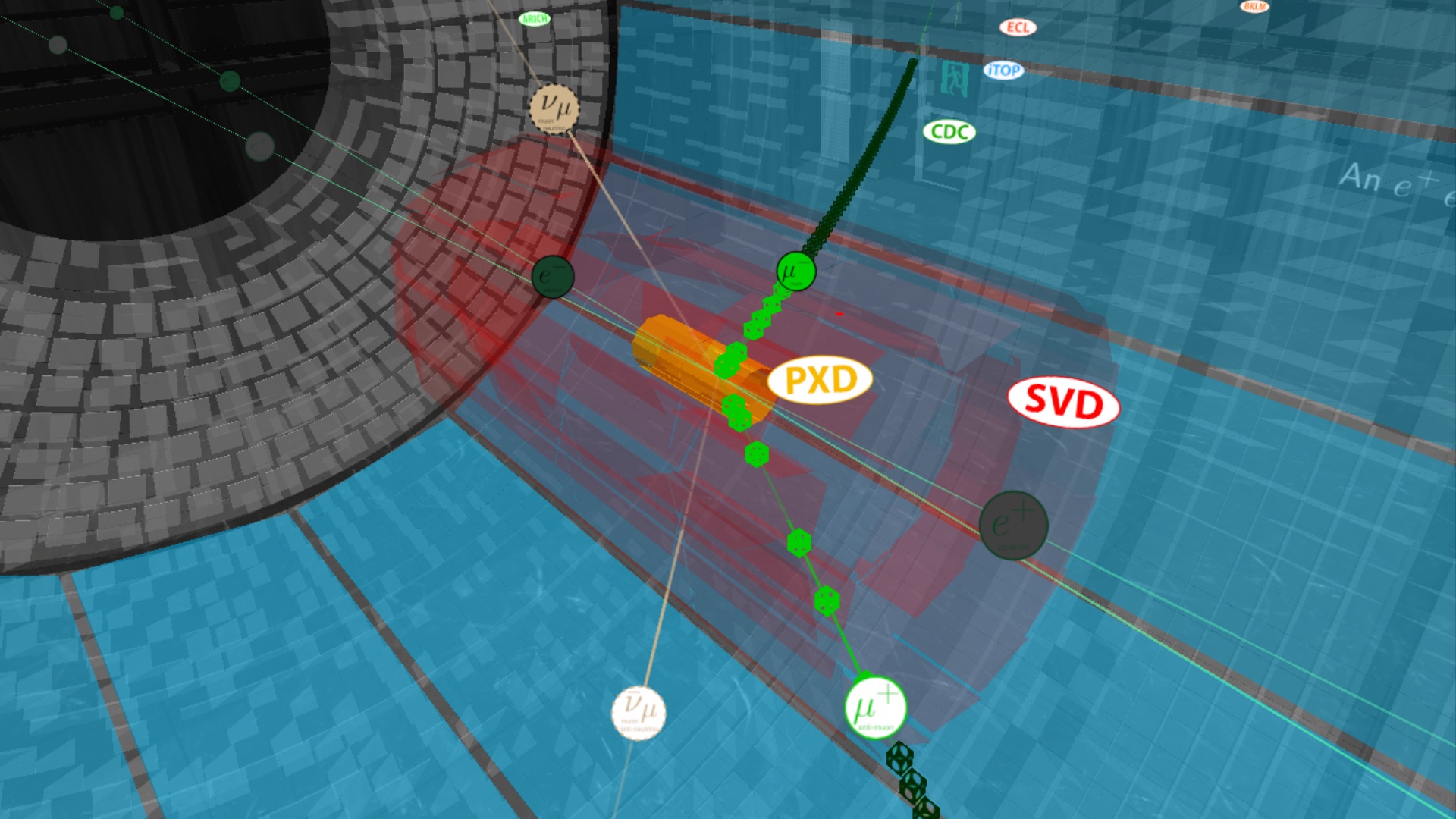
Figure 1. A computer graphics image of a simulated event in which a Z’ boson is produced by e+e- collisions, in association with two muons (green curves and hits) and decays into invisible particles. In this figure, the Z’ boson decays into an invisible neutrino and an anti-neutrino, but it may also decay into a dark matter particle and its anti-particle. In either case, no trace is left is in the detector. /(C) KEK, Belle II, created using Belle II in Virtual Reality developed by Zachary Duer, Tanner Upthegrove, Leo Piilonen, George Glasson, W. Jesse Barber, Samantha Spytek, Christopher Dobson at the Virginia Tech Institute for Creativity, Arts and Technology, Virginia Tech Department of Physics, Virginia Tech School of Education.
The Belle II international collaboration has published its first results in a paper selected as an Editors’ Suggestion in Physical Review Letters. The paper reports the first search for a new type of elementary particle that may act as a “portal” between ordinary matter and dark matter, which is understood to make up some 85% of the metter in the universe.
Read more
Link
Paper Information
Related Links
Past Press Release
- KEK Kick-off of the Belle II Phase 3 Physics Run
- KEK IPNSSuperKEKB Phase 3 (Belle II Physics Run) Starts
News Links
- KEK IPNS Belle II changing of the guard with Prof. Toru Iijima as the new spokesperson.
- KEK IPNSThe 1st “Belle II Physics Week” was held at KEK
- KEK IPNSIsraeli Ambassador to Japan Visits KEK Tsukuba Campus for Flag Raising Ceremony Commemorating Israel’s Participation as 25th Member Nation of Belle II Experiment
- KEK IPNS【Belle II Experiment】QCS Superconducting Magnets for Final Focusing of e-, e+ Beams Connected to Central Beam Pipes inside Belle II, Remote Vacuum Connection (RVC) Works Successfully
- KEK IPNSKEK/IPNS Official Website【Special Article】BelleⅡExperiment (in Japanese)